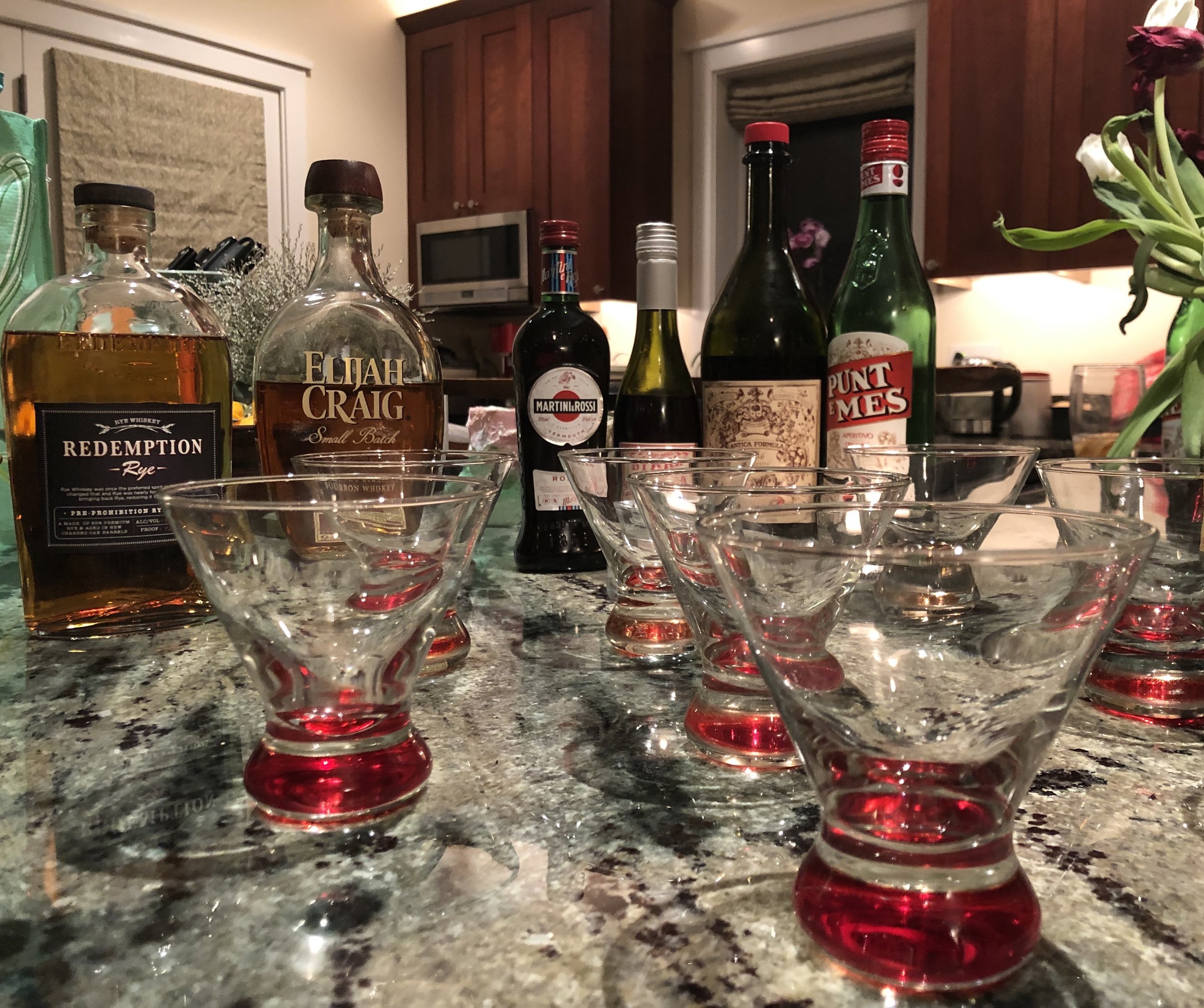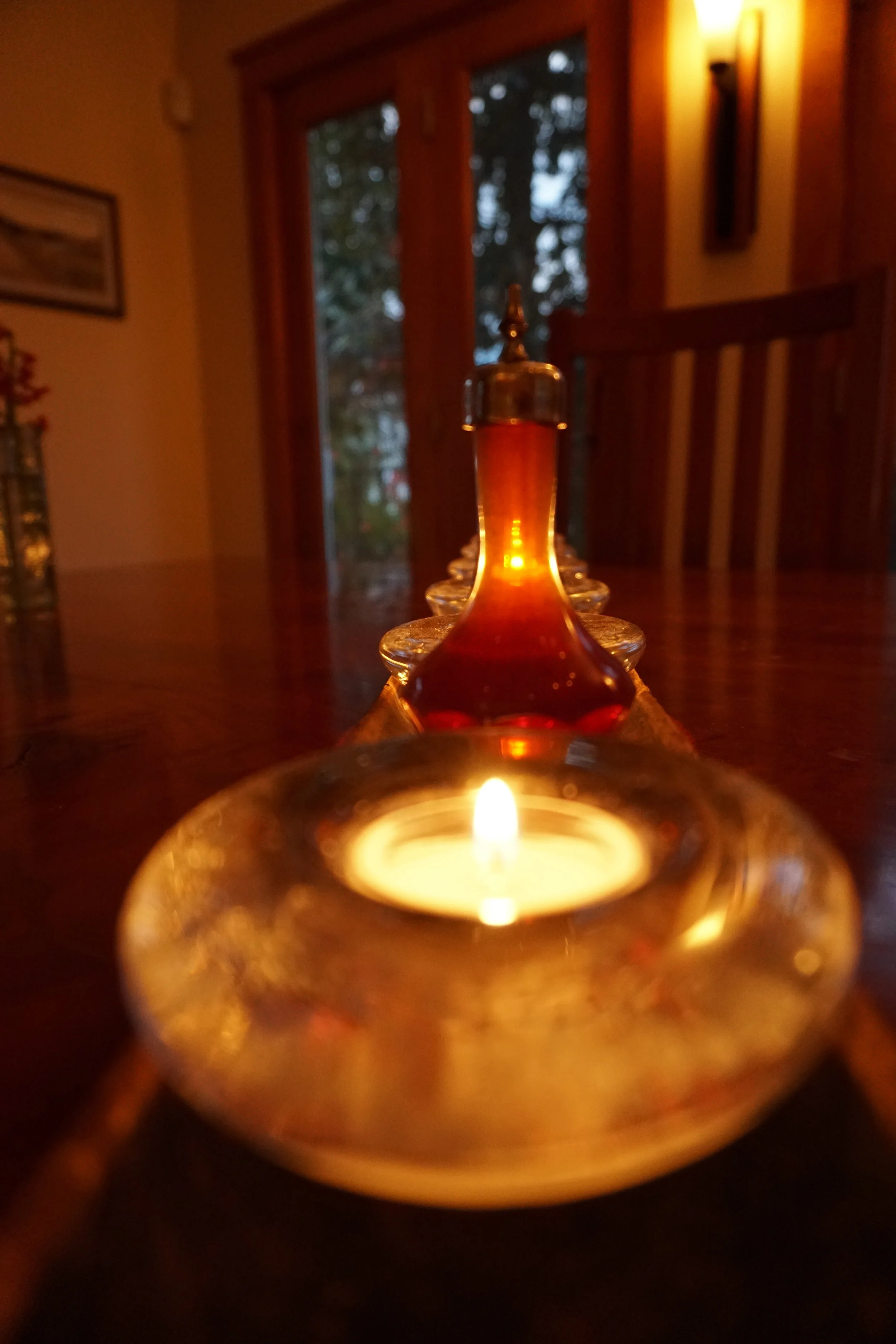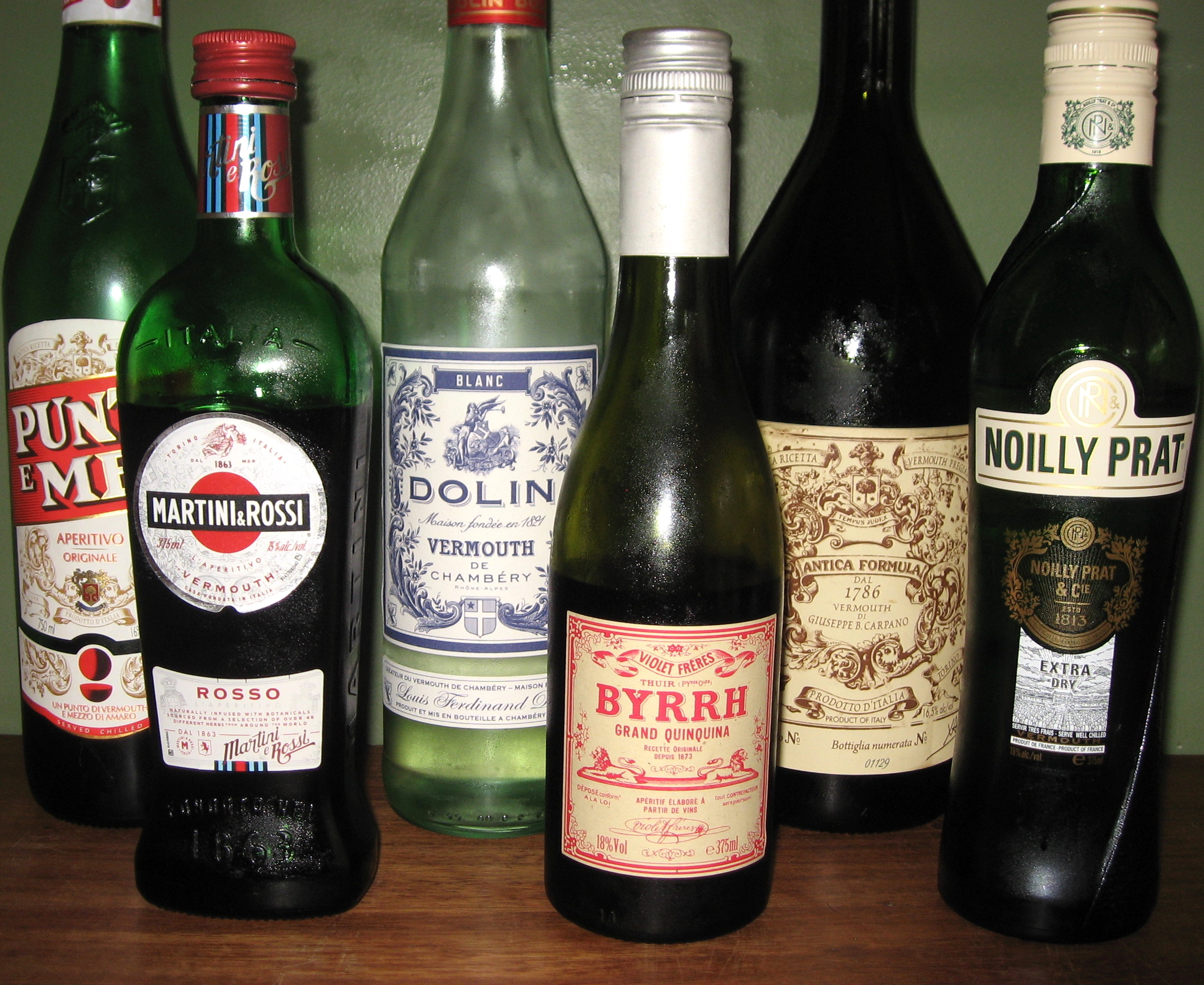The Manhattan Project

As part of our continuing education in vermouth, R and I rounded up the usual suspects for a tasting experiment. Guinea pigs/guest tasters J, M, and RM agreed to assist us in this noble endeavor. Much like the gin-and-tonic matrix of last year, we chose a single cocktail for analysis: the Manhattan. With just three components - whiskey, sweet vermouth, bitters - it's the ideal drink for comparing the flavors of different vermouths. The contenders, in no particular order, were:
Martini and Rossi Rosso - widely available, inexpensive, and quite tasty; its fruity sweetness is balanced by an herbal bitterness (think bay leaf and tobacco) and a touch of mocha.
Carpano Antica Formula - trendy favorite for craft cocktails; a subtle mix of dried fruit (figs, dates, cherries, apricots), vanilla, and cinnamon, with a caramel finish.
Punt e Mes - more assertive than the first two; raisins and prunes on the start, tart cranberries and orange zest in the middle, piney herbs and tannins at the end.
Byrrh Grand Quinquina - technically an aromatized wine; light-bodied, wine and berry flavors overlaying a delicate foundation of dark chocolate and quinine bitterness.
The next variable to consider was the whiskey: bourbon or rye? We opted for one of each, Elijah Craig Small Batch Bourbon and Redemption Rye. The drinks were prepared in the classic proportions - two ounces of whiskey, one ounce of sweet vermouth, two dashes of bitters - stirred with ice and served up. We used our home-made aromatic bitters, which has a similar flavor profile to Angostura bitters. And we skipped the traditional garnish of brandied cherries, to focus on the flavors of the various vermouths.
“This drink is a four, but that one is an eight!”
Our first test was to determine the influence of bitters on the taste of the cocktail. Wow, what a difference! Just as salt enhances the flavors of a dish, bitters brings out the different elements of the whiskey and vermouth. As M noted, "this drink [w/o bitters] is a four, but that one [after adding bitters] is an eight!" We then proceeded to sample each of the different whiskey/vermouth combinations (all with bitters).
Unlike the gin and tonic tasting, when each of us had a different favorite, there was much more agreement this time. The panel split evenly between a preference for bourbon or rye, but Carpano was the consensus top pick for both groups. It added woodsy, earthy notes to balance the corn sweetness of bourbon, and contributed a warmth and depth to the dry, spicy bite of rye. Always pushing the envelope, R went a bit off-menu with a 50/50 blend of Carpano and Punt e Mes for his rye Manhattan. It was also excellent, and I can understand why it's his go-to version of the drink.
All of these vermouths made excellent Manhattans, but the others might be better suited to different drinks. The M&R Rosso was more background player than equal partner to the whiskey; I imagine it would work well with brandy, as in the classic Harvard or Metropolitan cocktails (not the Cosmopolitan variation of the same name). Punt e Mes seems ideal for a Negroni, paired with the equally assertive flavors of gin and Campari. And the Byrrh? Perfect as an apéritif, chilled, with a twist of orange. Yum!
I foresee more vermouth experiments in my future...
h.




